Lotek (Indonesian Vegetable & Tofu Salad with Peanut Dressing)
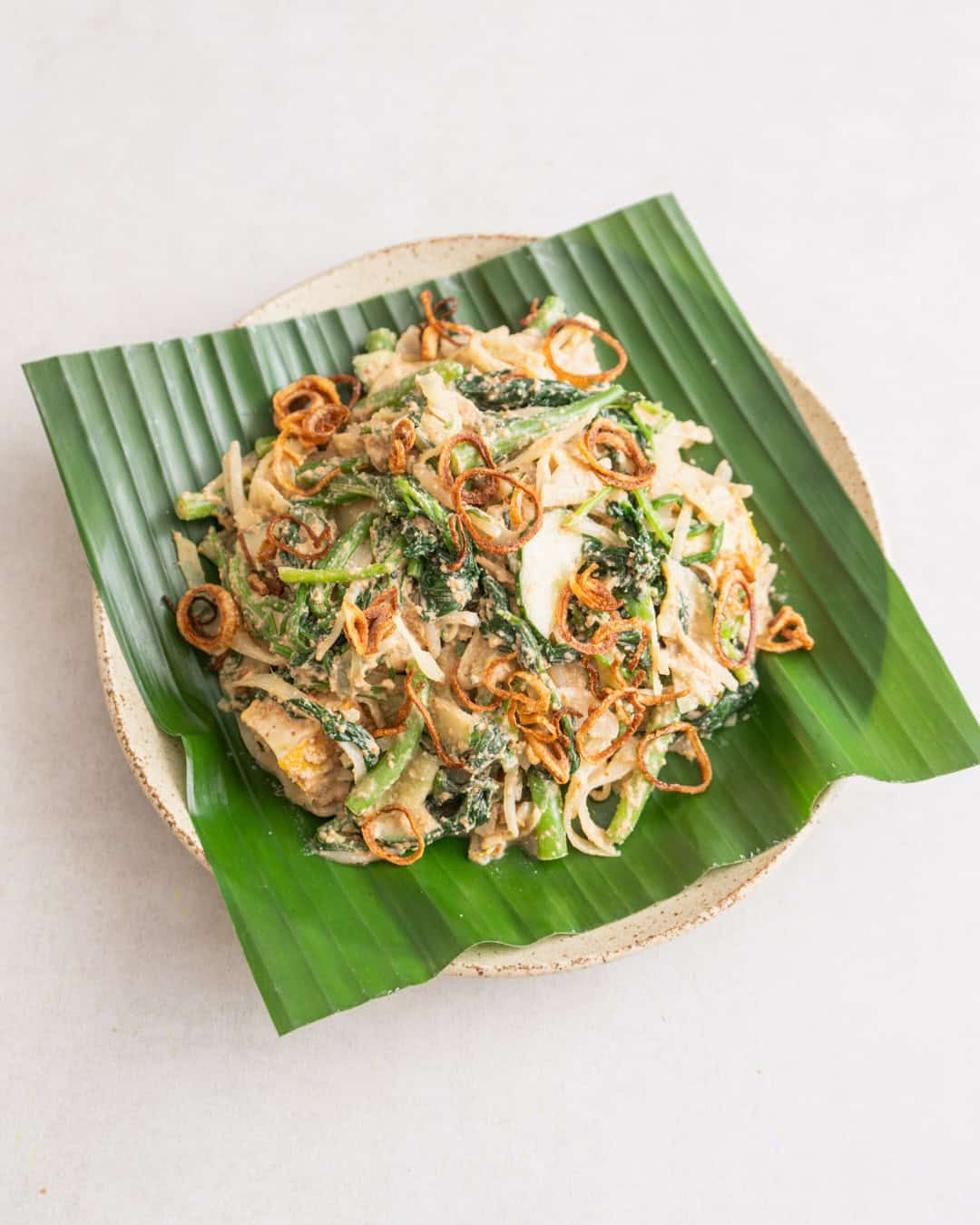
What is Lotek?
Lotek is a traditional Indonesian vegetable salad, commonly found in West Java. It is made with a variety of steamed or blanched vegetables, like spinach, green beans, bean sprouts and cabbage, and is served with a rich peanut sauce. It’s often seen as a symbol of Sundanese cuisine, which originated in West Java and is known for its balance of sour, sweet and savory aromas. The combination of fresh veggies and savory peanut sauce makes Lotek an exciting, flavor-packed dish that is naturally vegan. It’s perfect as a refreshing side, but it’s often served alongside turmeric-fried tofu for a wholesome main course.
At first sight, Lotek is similar to the more commonly known Gado Gado. The biggest differences lie in the peanut sauce. Gado Gado is made with coconut milk in some regions of Indonesia, while Lotek is often a little brighter and more refreshing in flavor. The other key difference is that the sauce for Gado Gado is usually served alongside the salad or simply poured on top, while Lotek is well mixed before serving.
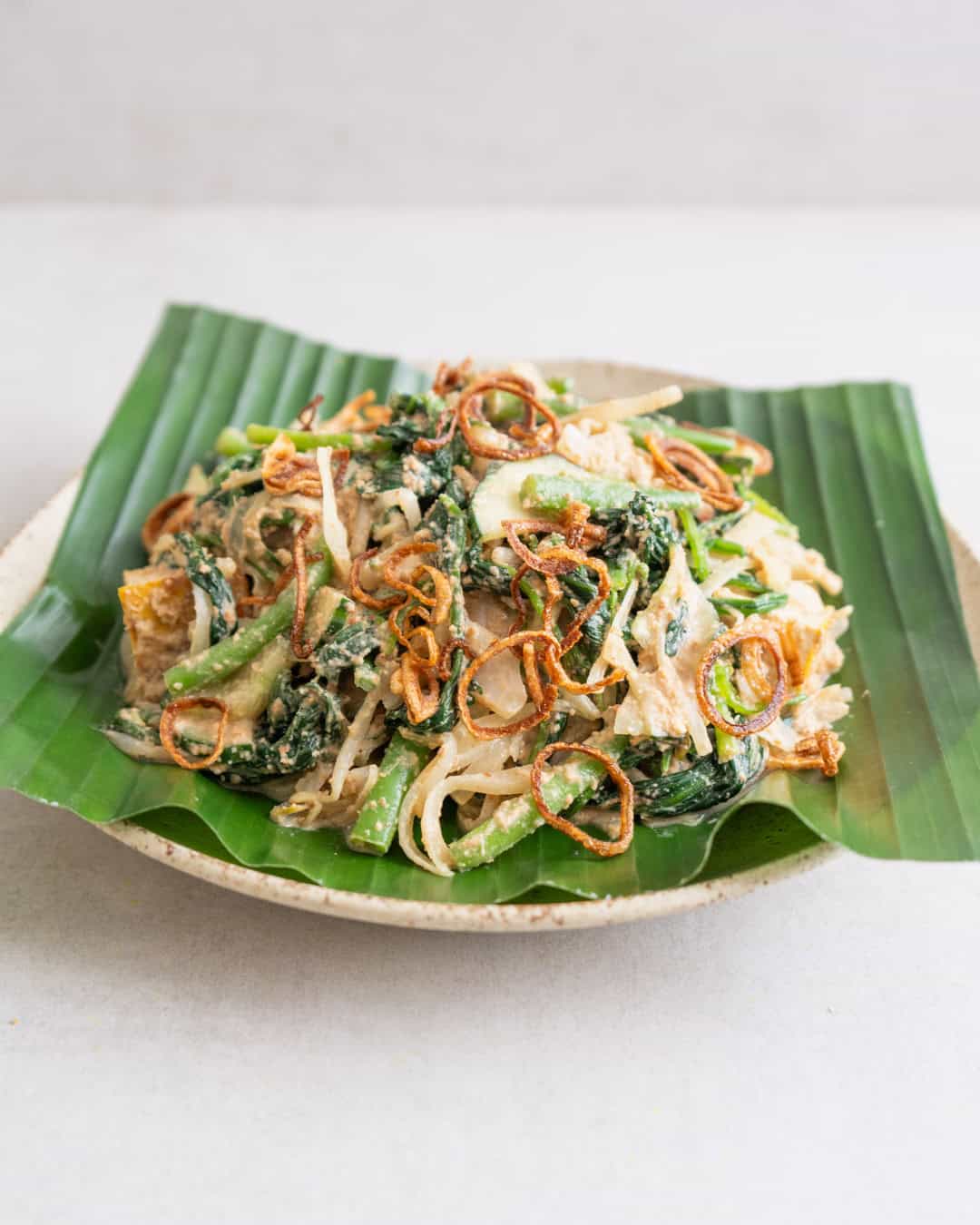
Ingredients You’ll Need & How to Substitute
- Fresh vegetables: Common choices include water spinach (or regular spinach), green beans, bean sprouts, cabbage and cucumbers, but you can add or substitute with any vegetables of your choice. Try adding some halved cherry tomatoes for an extra burst of refreshing flavor.
- Peanut sauce: This is the star of the dish and consists of peanuts, galangal, garlic, chilies, tamarind, lime juice and palm sugar for a rich, savory flavor. The peanuts are traditionally deep-fried, but I like to roast them instead for a slightly healthier version. You can use tamarind paste instead of seedless tamarind and you can sweeten the sauce with dark brown sugar instead of palm sugar.
- Tofu or tempe (optional): Some variations of Lotek include deep-fried tofu or tempe for added protein. In my recipe, I pan-fried some spiced tofu for a slightly quicker and healthier version.
- Rice crackers (optional): These are often served on the side to complement the dish, but are usually not vegan (most include prawn) and therefore not included in my recipe. You can find vegan options in selected grocery stores.
- Rice cakes or rice (optional): Though I haven’t used them in this recipe, Lotek is often served with rice cakes called ketupat that are cut up and mixed into the salad. You can also serve the salad alongside freshly steamed rice.
How to make Lotek (Step-by-Step)
Prep the vegetables. If making your own crispy shallots, peel and finely slice them. Line a large plate with kitchen paper. Put the shallot slices in a small saucepan and add the groundnut oil. Fry the shallots over medium-low heat until deep golden (8–10 minutes), stirring regularly. Use a slotted spoon to transfer them onto the kitchen paper and sprinkle with a little salt.
Bring a large pan of seasoned water (1 tbsp of salt per litre) to a boil. Slice the cabbage and cut the beans into 4 cm pieces. If using water spinach, trim any thicker stems and add them to the beans.
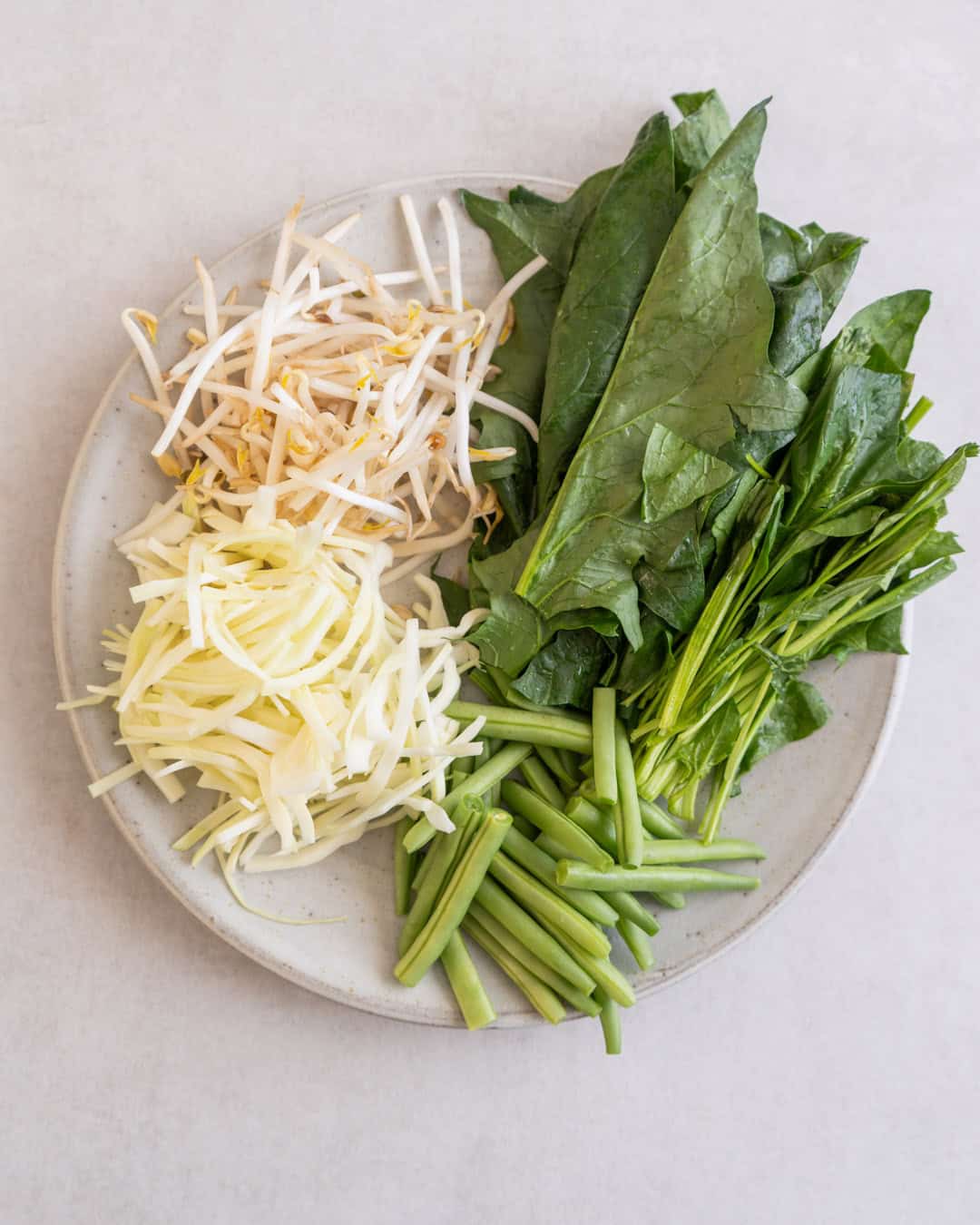
Blanch the vegetables (apart from the cucumber) separately until just tender. The cabbage and beans take around 3 minutes, the spinach and beansprouts 1 minute. Then transfer them to iced or cold water, strain once cooled down and set aside.
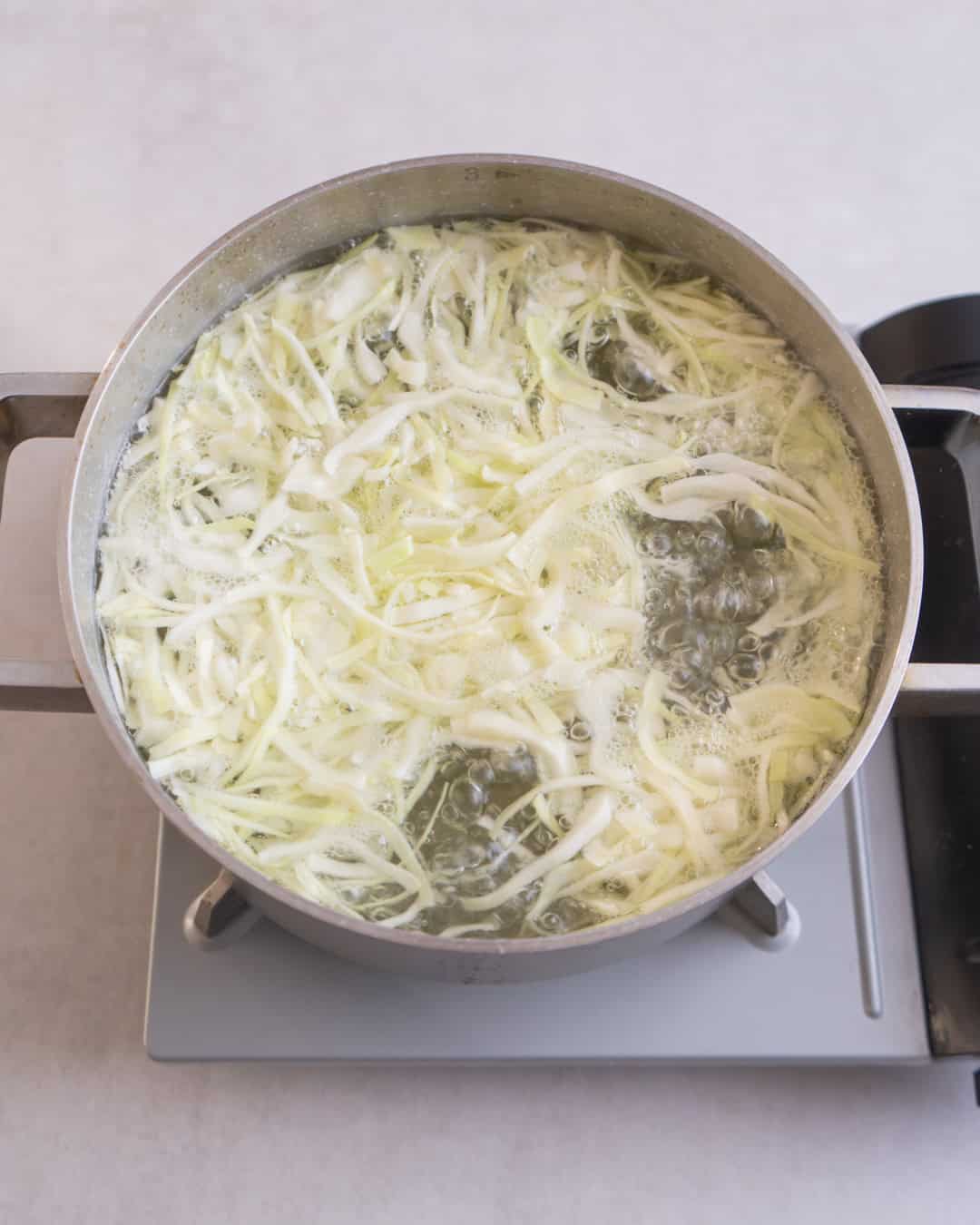
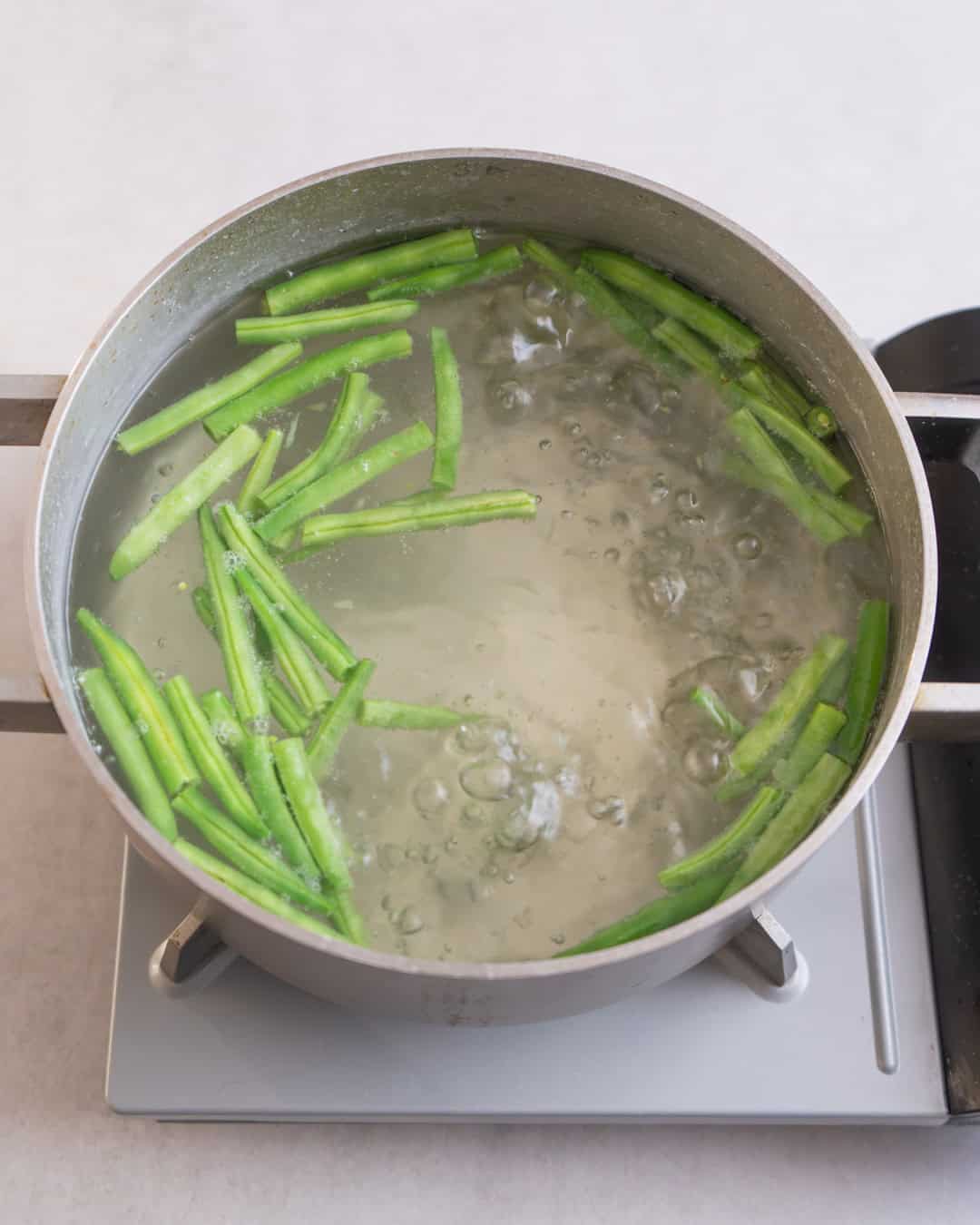
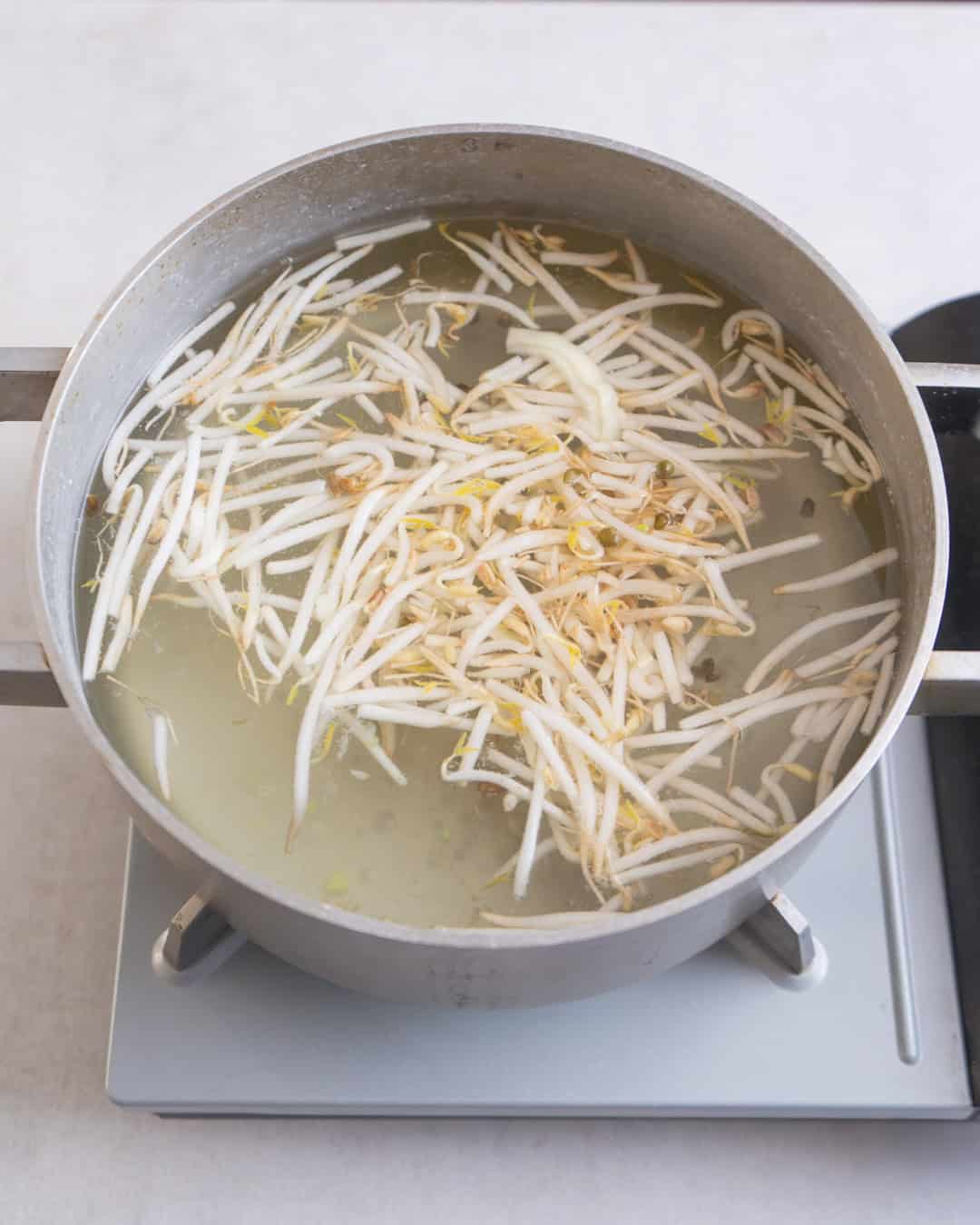
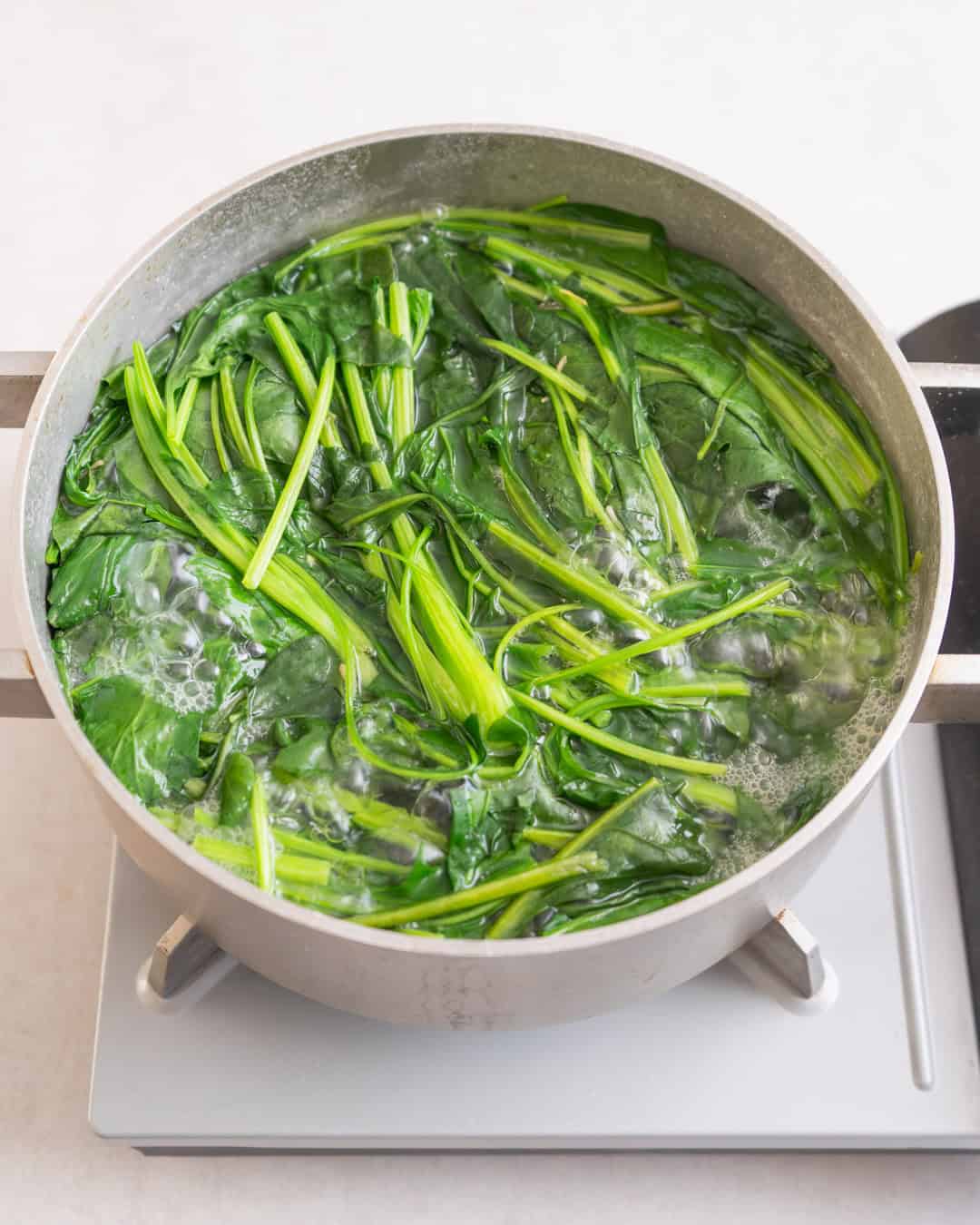
Cut the cucumber in half lengthways and thinly slice it.
Fry the tofu.
Coat the tofu evenly with the turmeric, coriander, salt and 1 tablespoon of the oil. Heat the remaining 2 tablespoons of oil over medium heat in a non-stick frying pan and fry the tofu until golden on both sides (3-4 minutes total).
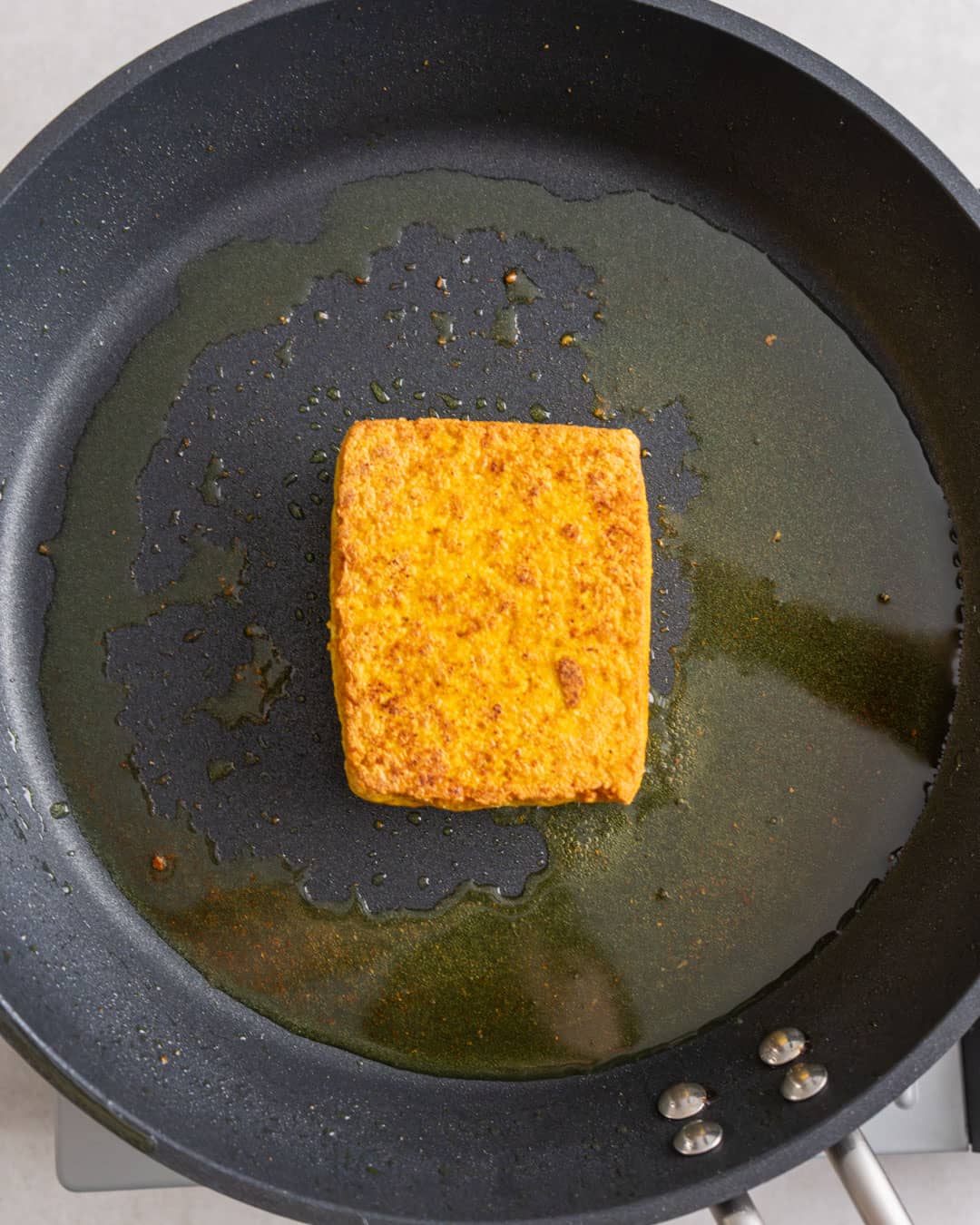
Transfer to a board, cut into mouth-sized pieces and set aside.
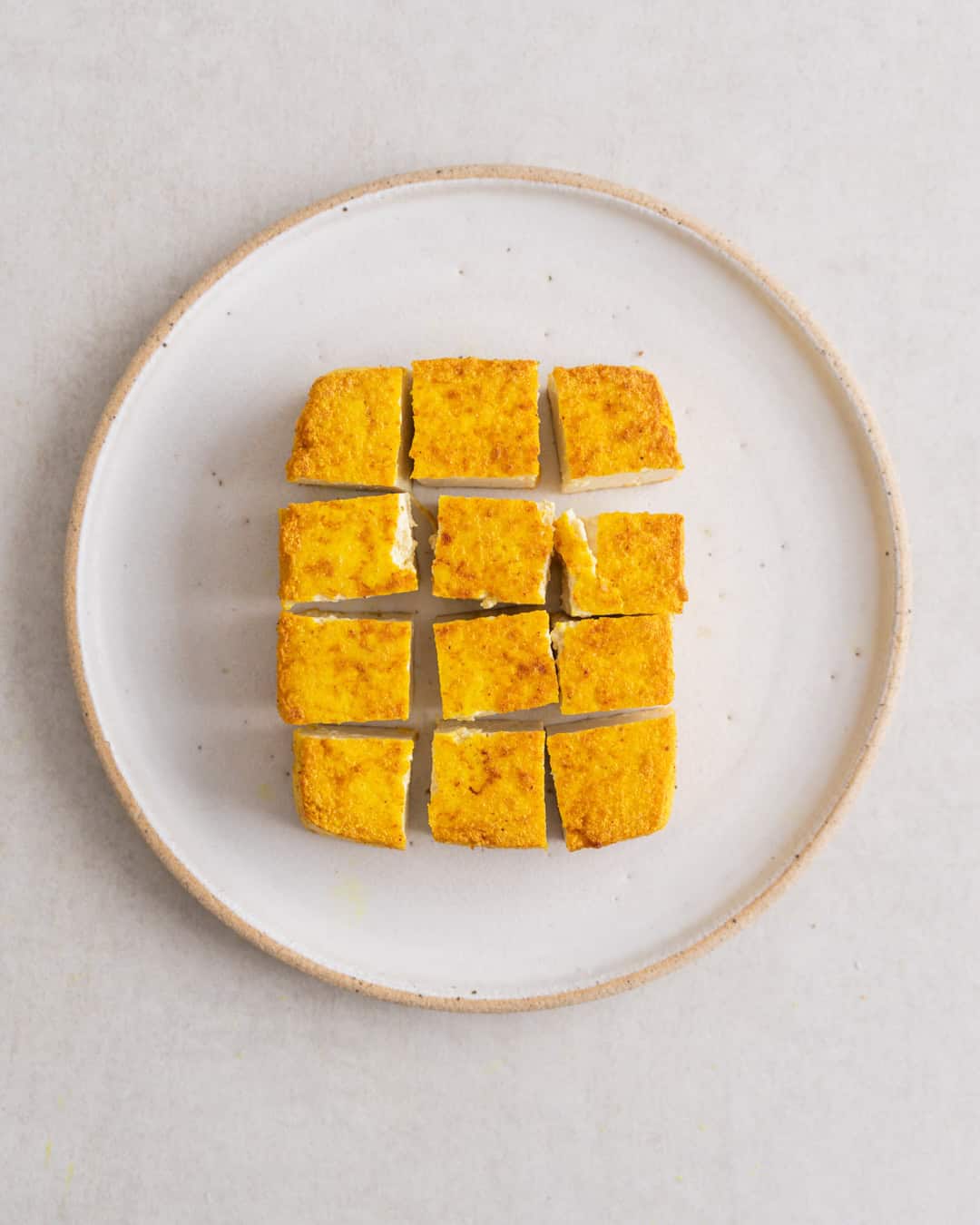
Make the peanut sauce. If starting with raw peanuts, pre-heat the oven to 180°C and roast the nuts for 15-20 minutes, until golden. Set aside to cool.
If using seedless tamarind, soak it in 150ml boiling water for 10 minutes.
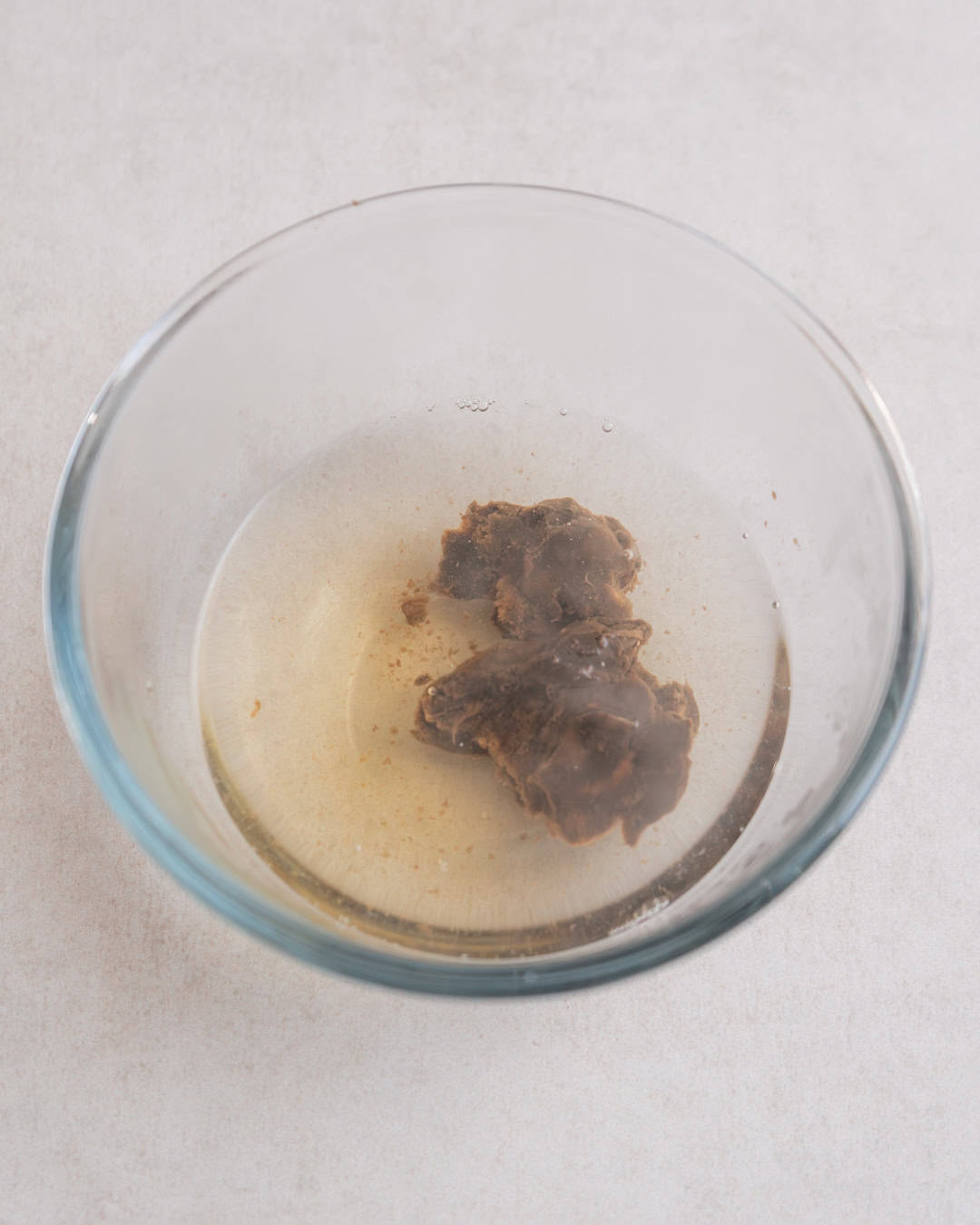
When cool enough to handle, use your fingers to loosen the flesh from the fibrous strings. Strain the liquid through a fine sieve into a small bowl and discard the pulp.
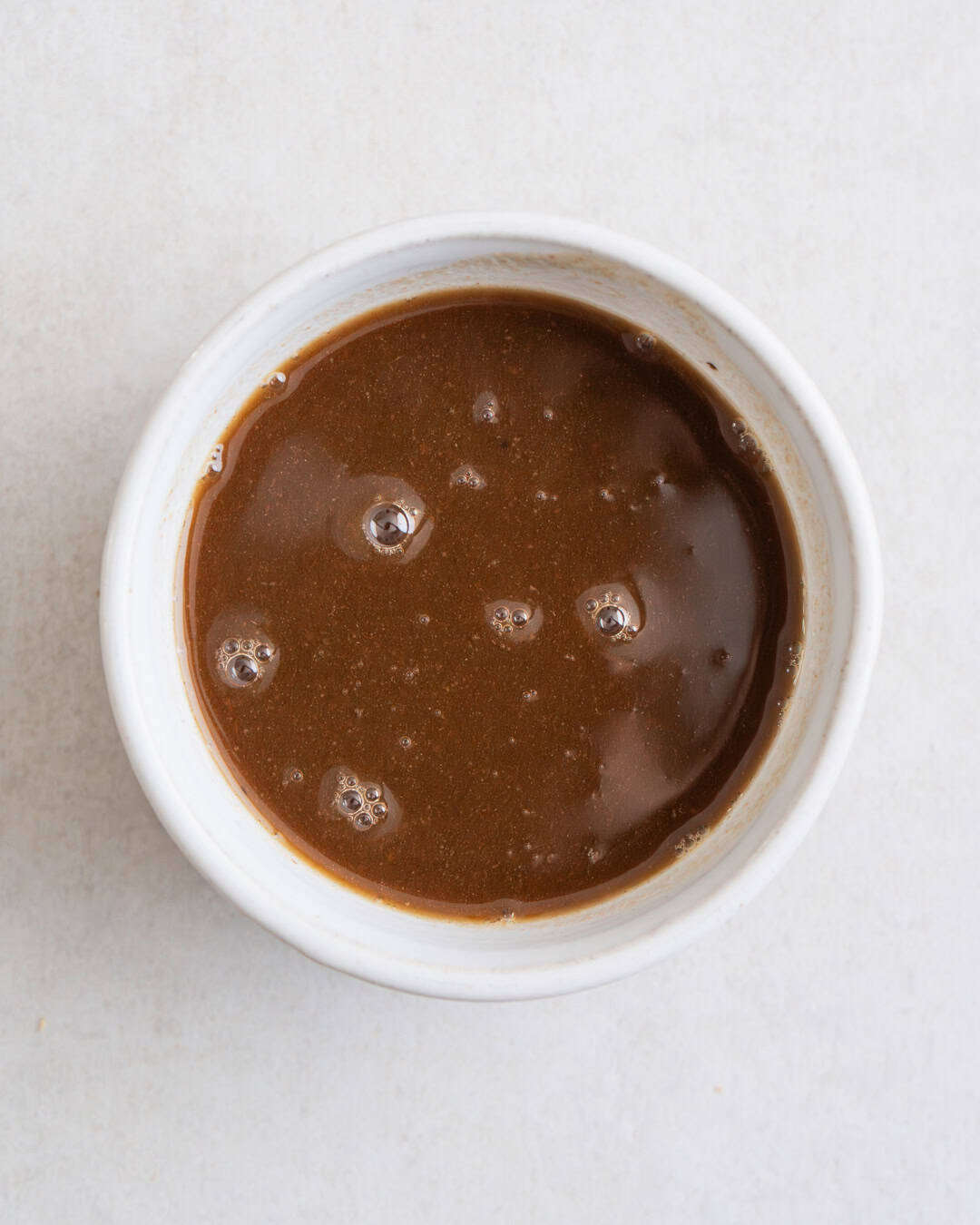
Trim the chillis, peel the garlic clove and galangal and add them together with the salt to a Small Food Processor.
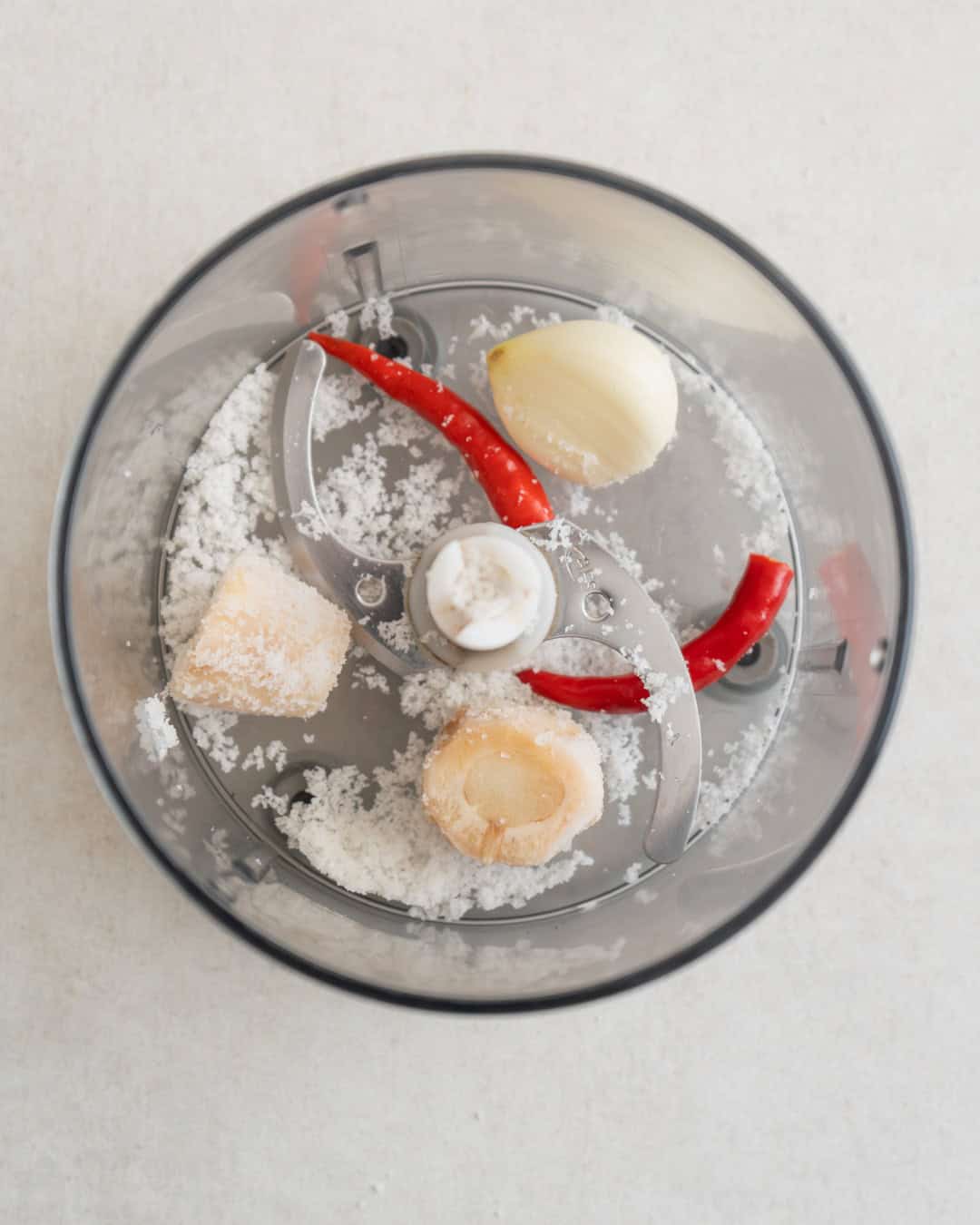
Blend into a purée.
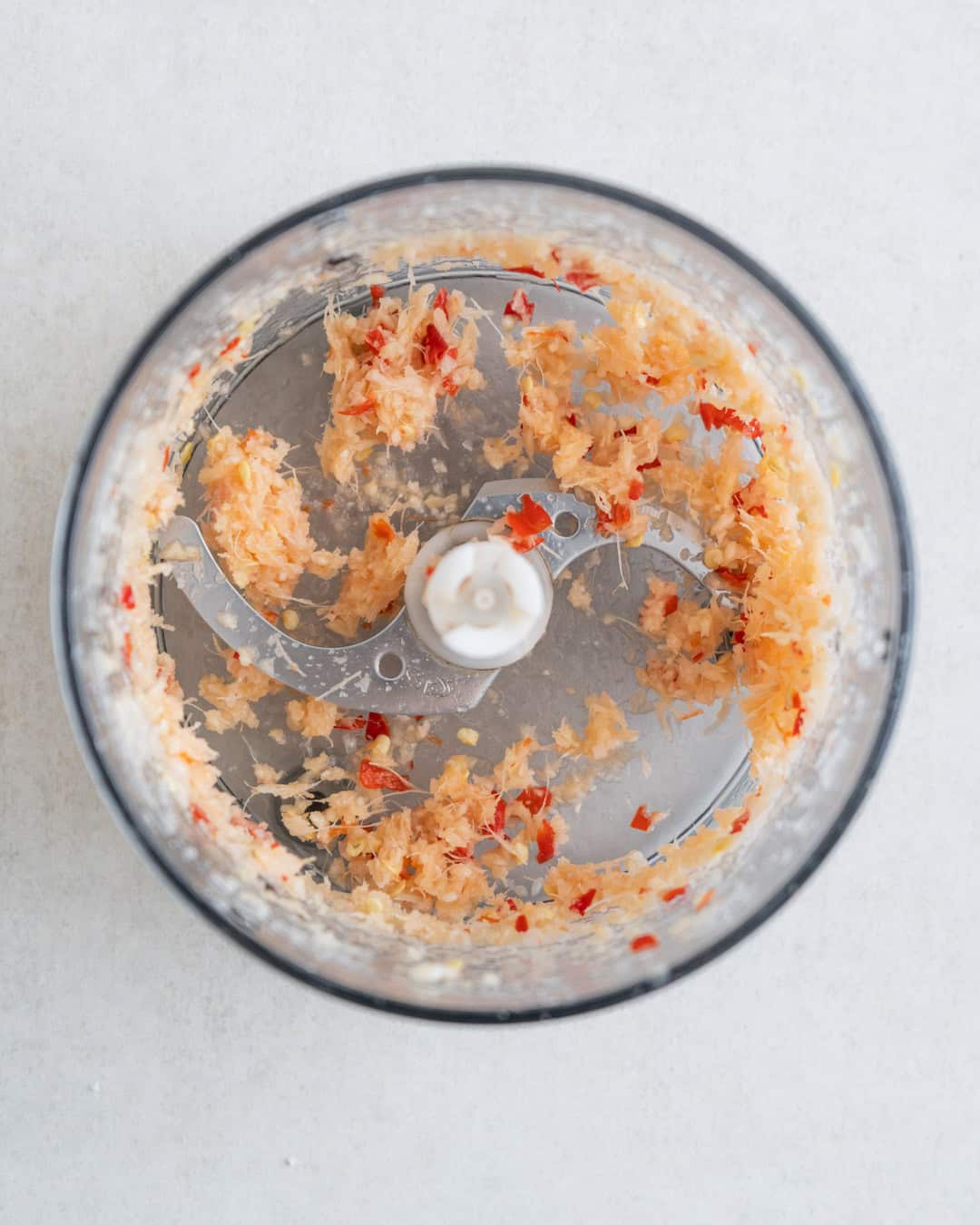
Add the peanuts and blend for around 1 minute until they begin to break down to a coarse paste.
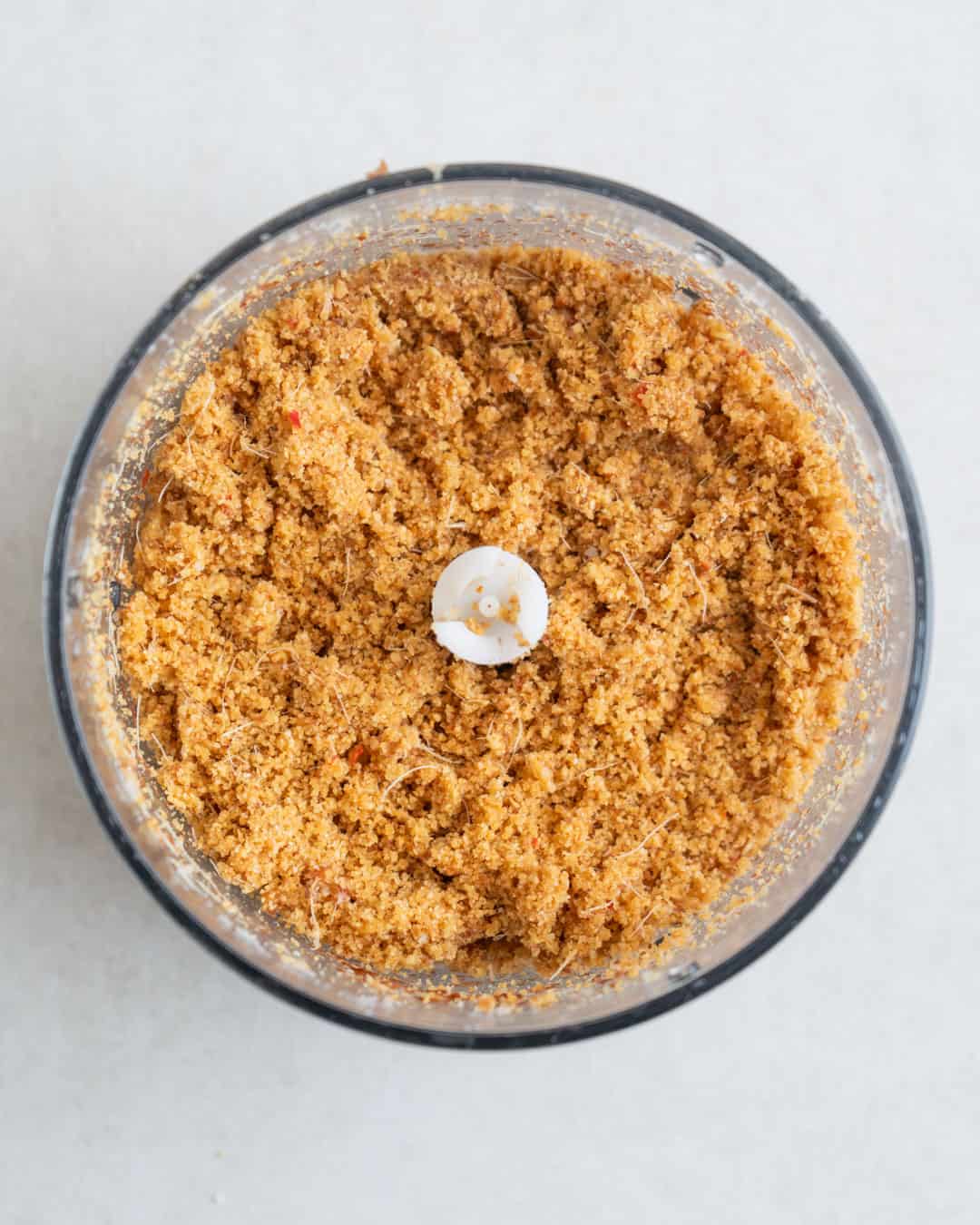
Then add the palm sugar, tamarind water (or diluted paste) and lime juice and blend to combine.
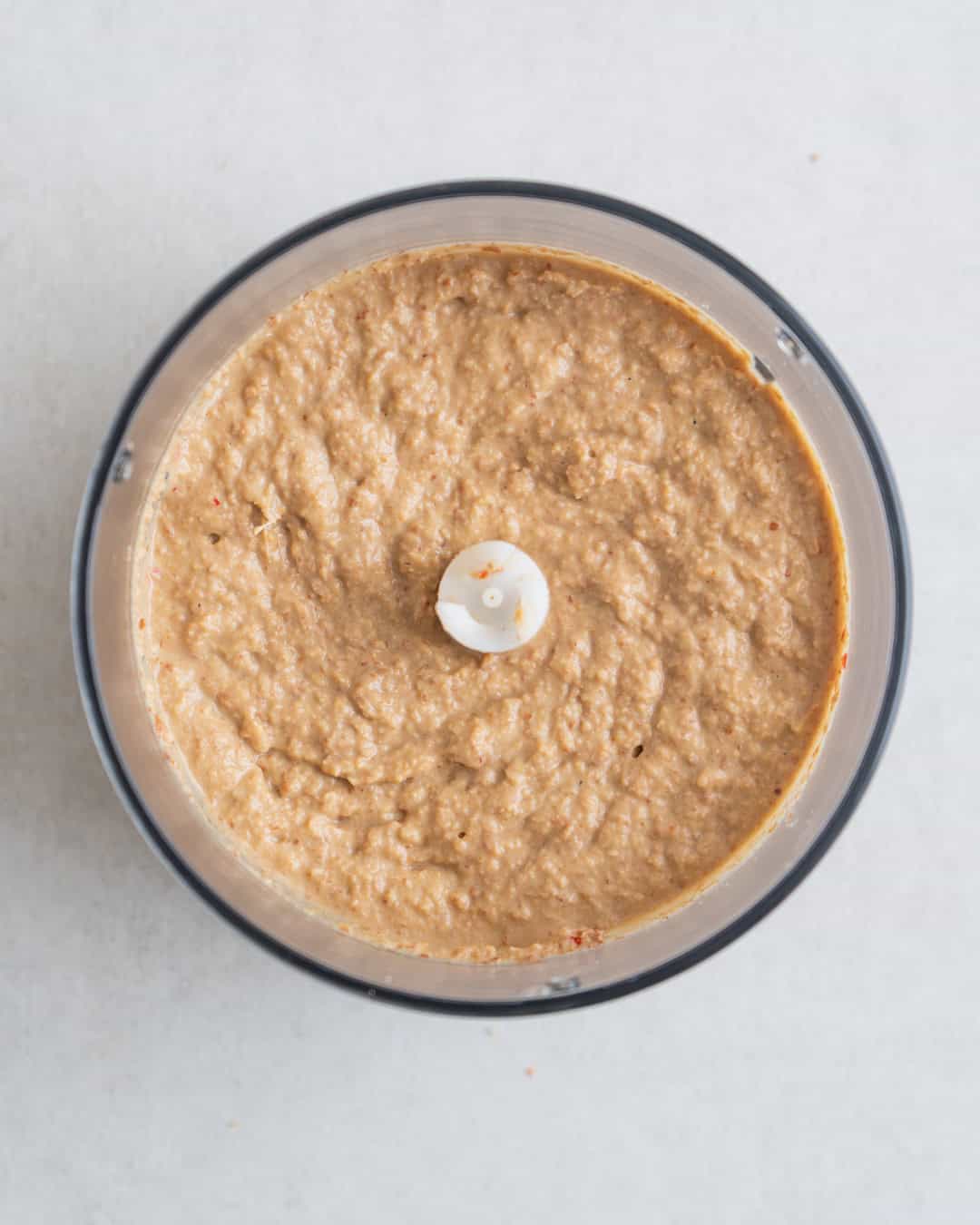
Alternatively, you can grind the paste in a large pestle & mortar or traditional Ulekan Cobek.
Combine the ingredients. Add the cooked vegetables, sliced cucumbers, tofu and dressing to a large mixing bowl.
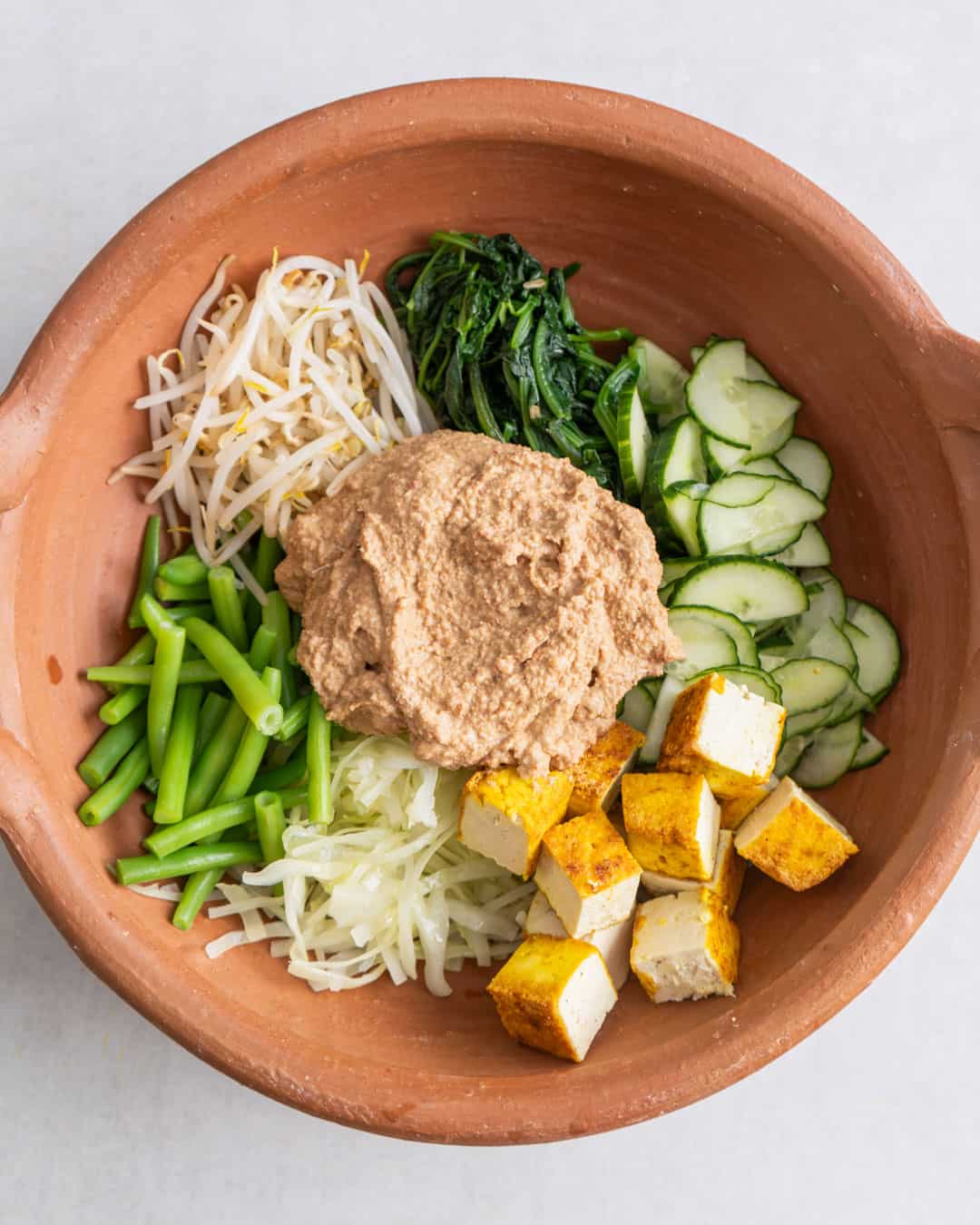
Mix well.
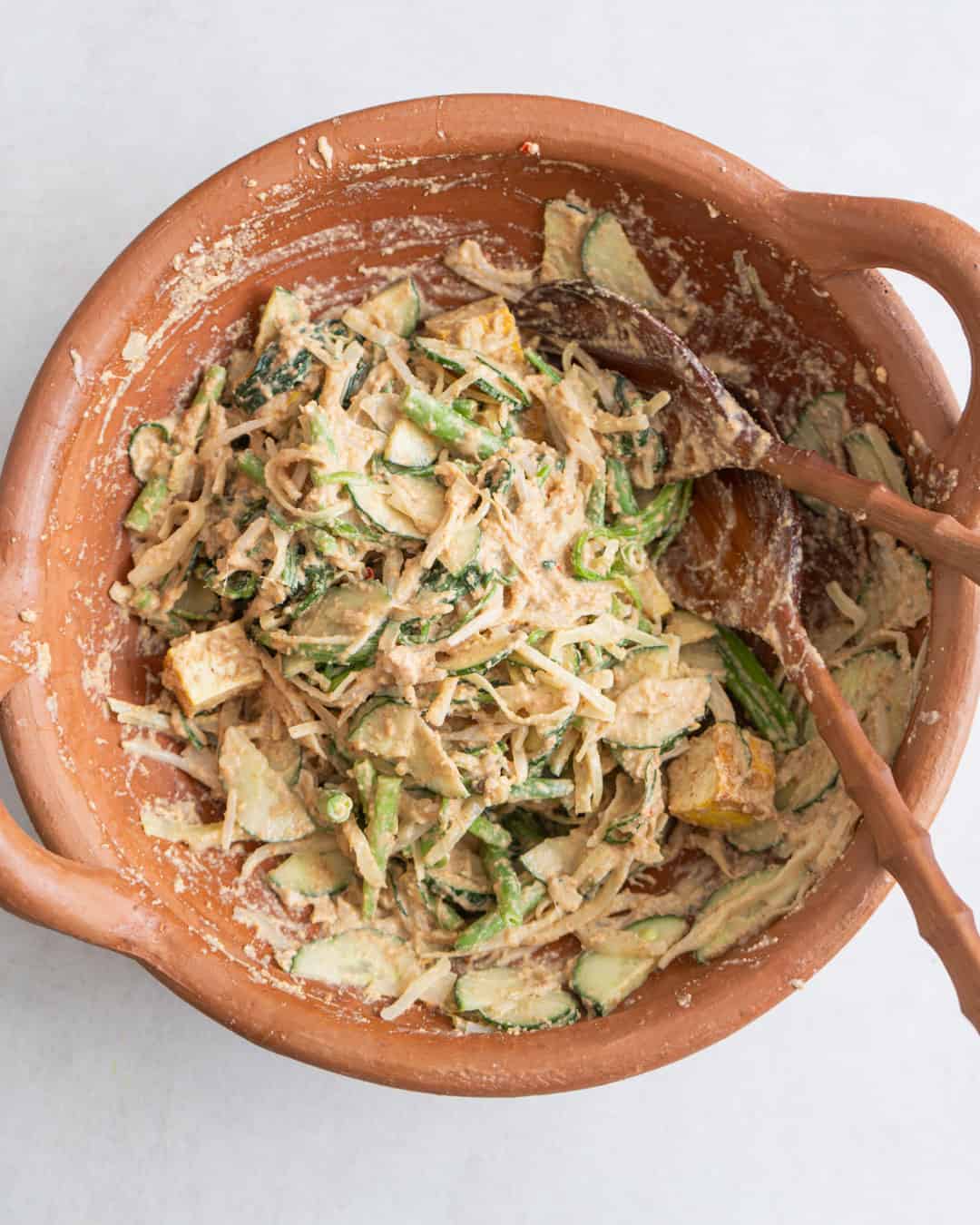
Divide over plates and top with the crispy shallots before serving.
Useful Tips
- Peanut sauce too thick: If the peanut sauce becomes too thick, add a little water to thin it out until it reaches the desired consistency. Adjust the seasoning afterward to maintain the flavor balance.
- Peanut sauce too thin: If your peanut sauce is too runny, try adding more roasted peanuts or peanut butter to thicken it up.
- Vegetables too soft: If you haven’t exceeded the cooking time, the vegetables might have continued to steam after blanching. Next time, make sure to transfer the blanched vegetables to (ice) cold water right after cooking. That way they maintain their vibrant color and a pleasant crunch.
- Too spicy: If the sauce ends up too spicy, you can tone it down a little by adding more palm sugar or a squeeze of lime juice.
- Pestle & Mortar: For a more authentic method, you can use a traditional pestle and mortar (Ulekan Cobek) to make the peanut sauce.
- Make ahead: You can prepare the peanut sauce in advance and store it in the fridge for up to a week, which makes meal prep faster when you’re ready to serve Lotek.
Why You’ll Love This Lotek Recipe
- naturally & traditionally vegan
- refreshing
- easy to make ahead
- versatile – use the vegetables you like most
How to Store Lotek
To store leftover Lotek, keep the blanched vegetables and peanut sauce separate. The vegetables can be stored in an airtight container in the fridge for 2-3 days. The peanut sauce can be refrigerated in a sealed jar for up to 1 week. When you’re ready to serve, mix the sauce with the vegetables just before eating to prevent the veggies from becoming soggy. If the sauce has thickened in the fridge, simply add a splash of water and stir to bring it back to the right consistency.
Other Salad Recipes You Might Like
- Tohu Thoke: Burmese chickpea tofu salad
- Black Fungus: refreshing Chinese salad made with cloud ear mushrooms
- Kısır: vibrant Turkish bulgur salad
- Kartoffelsalat: a traditional German potato salad
**I receive a small commission from affiliate links on this page**
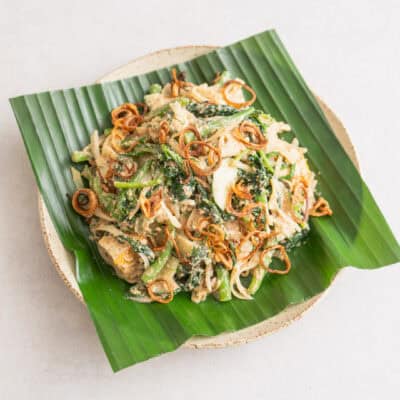
Lotek (Indonesian Vegetable Salad with Peanut Dressing)
Equipment
- Small Food Processor, (I use the mini mixer of an immersion blender)
Ingredients
Peanuts
- 150 g raw peanuts (skin on), or roasted peanuts
Vegetables
- 2 round shallots (or 2 tbsp crispy shallots)
- 100 g groundnut oil (110 ml)
- ¼ white cabbage (200g)
- 100 g green beans
- 200 g water spinach (or large leaf spinach)
- 100 g beansprouts
- ½ cucumber (200g)
Turmeric Tofu (optional)
- 200 g tofu (or tempe)
- ¼ tsp turmeric
- ⅛ tsp ground coriander
- ¼ tsp salt
- 3 tbsp groundnut oil
Dressing
- 30 g seedless tamarind (or 2 tbsp tamarind paste diluted in 120ml water)
- 2 bird’s eye chillies
- 1 large garlic clove
- 3 cm galangal (20g)
- 1 tbsp salt (14g)
- 150 g roasted peanuts (from above)
- 1 tbsp palm sugar (25g)
- 1 tbsp lime juice
Instructions
Peanuts
- If starting with raw peanuts, pre-heat the oven to 180 °C (356 °F) (160 °C (320 °F)) and roast the nuts until golden (15-20 minutes). Set aside to cool.
Vegetables
- Bring a large pan of seasoned water (1 tbsp of salt per litre) to a boil.
- If making your own crispy shallots, peel and finely slice them. Line a large plate with kitchen paper. Put the shallot slices in a small saucepan and add the groundnut oil. Fry the shallots over medium-low heat until deep golden (8–10 minutes), stirring regularly. Use a slotted spoon to transfer them onto the kitchen paper and sprinkle with a little salt.
- Prepare the veg: Slice the cabbage and cut the beans into 4 cm pieces. If using water spinach, trim any thicker stems and add them to the beans. Blanch the vegetables (apart from the cucumber) separately until just tender. The cabbage and beans take around 3 minutes, the spinach and beansprouts 1 minute. Then transfer them to iced or cold water, strain once cooled down and set aside. Cut the cucumber in half lengthways and thinly slice it.
Tofu
- Coat the tofu evenly with the turmeric, coriander, salt and 1 tablespoon of the oil.
- Heat the remaining 2 tablespoons of oil over medium heat in a non-stick frying pan. Fry the tofu slices until golden on both sides (3-4 minutes total). Transfer to a board, cut into mouth-sized pieces and set aside.
Dressing
- If using seedless tamarind, soak it in 150ml boiling water for 10 minutes. When cool enough to handle, use your fingers to loosen the flesh from the fibrous strings. Strain the liquid through a fine sieve into a small bowl and discard the pulp
- Trim the chillis, peel the garlic clove and galangal and add them together with the salt to a small food processor. Blend into a purée. Add the peanuts and blend for around 1 minute until they begin to break down to a coarse paste. Then add the palm sugar, tamarind water (or diluted paste) and lime juice and blend to combine. Alternatively, you can grind the paste in a large pestle & mortar or traditional Ulekan Cobek.
Serving
- Add the cooked vegetables, sliced cucumbers, tofu and dressing to a large mixing bowl and mix well. Then divide over plates and top with the crispy shallots before serving.
